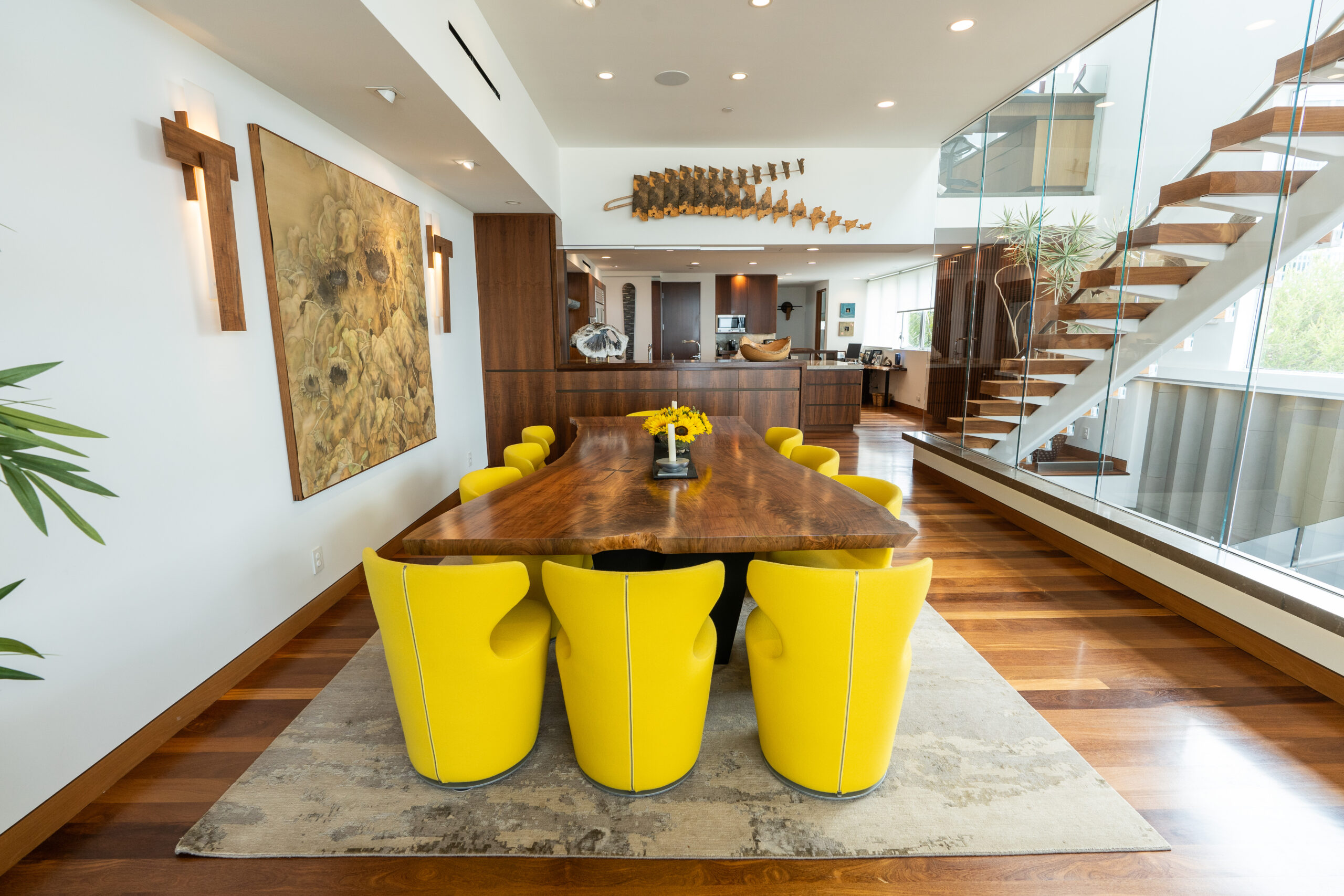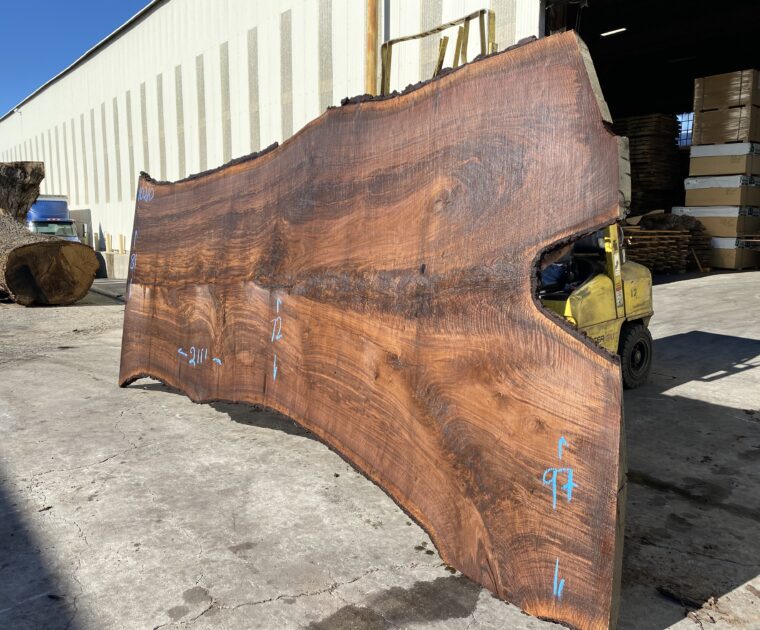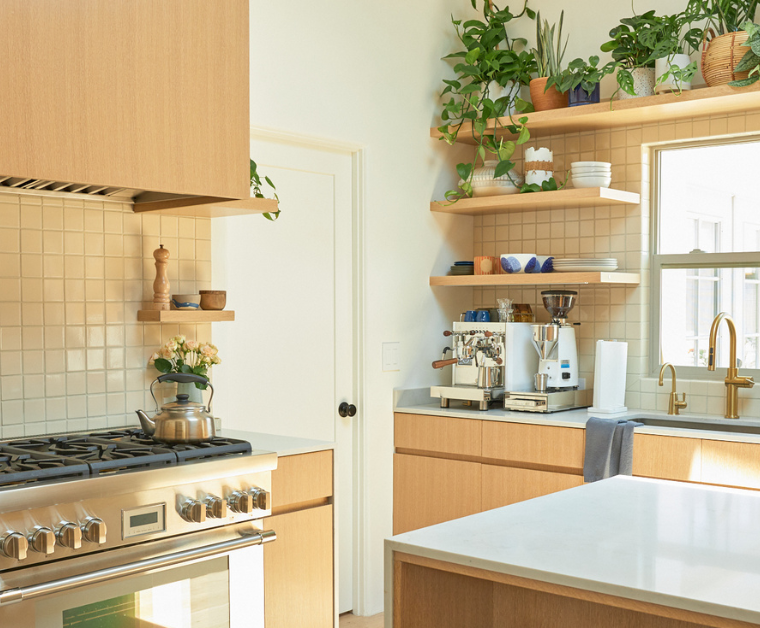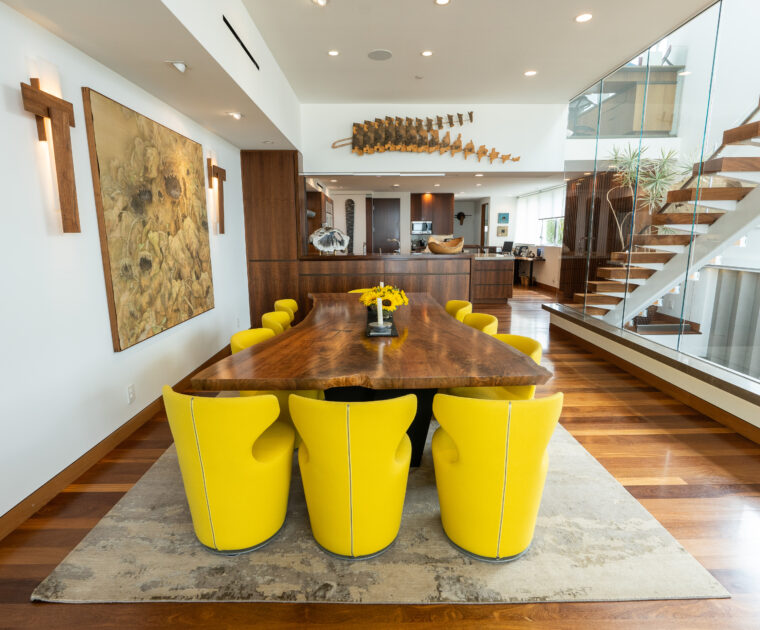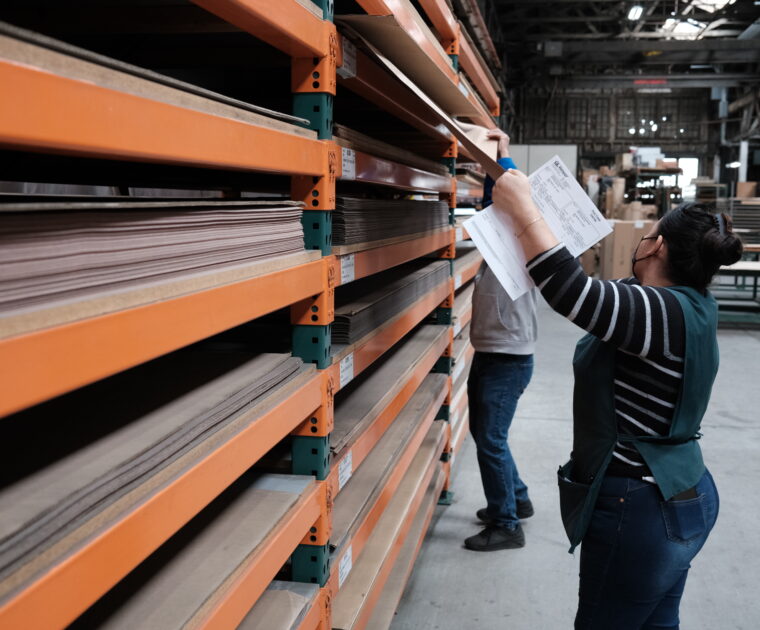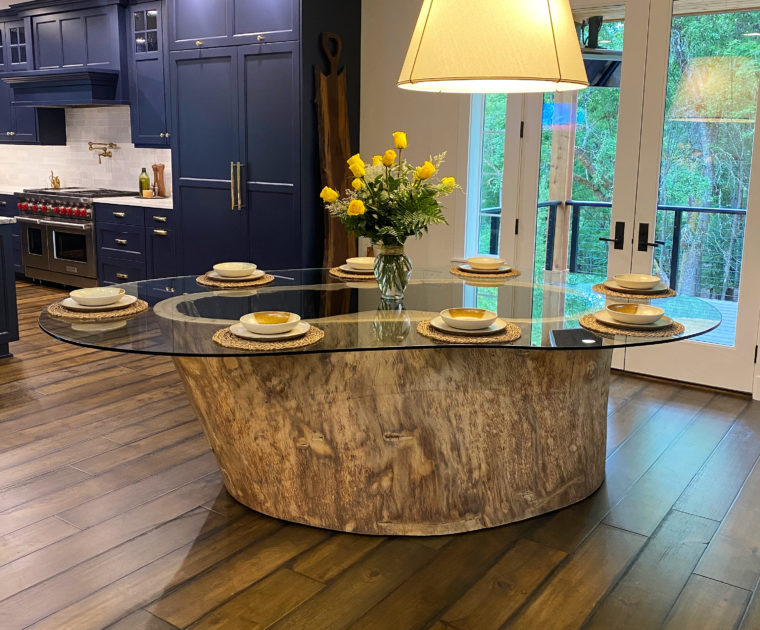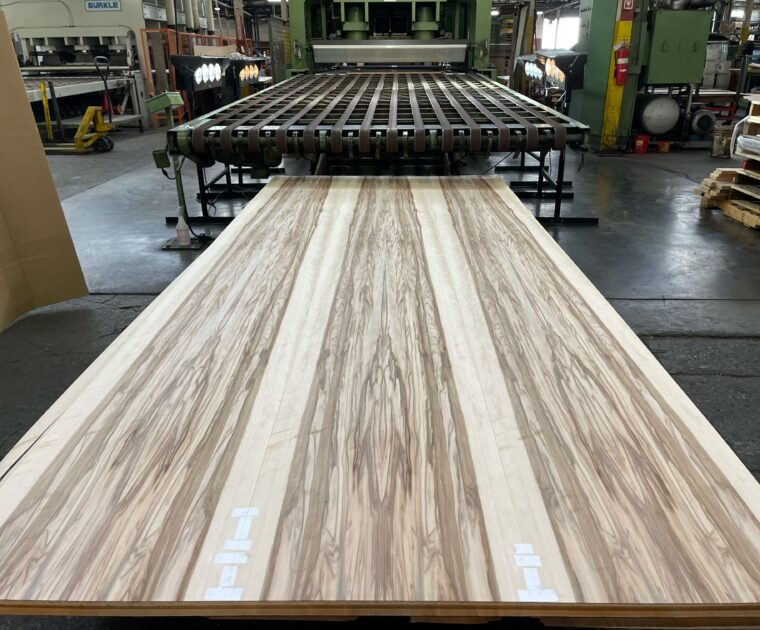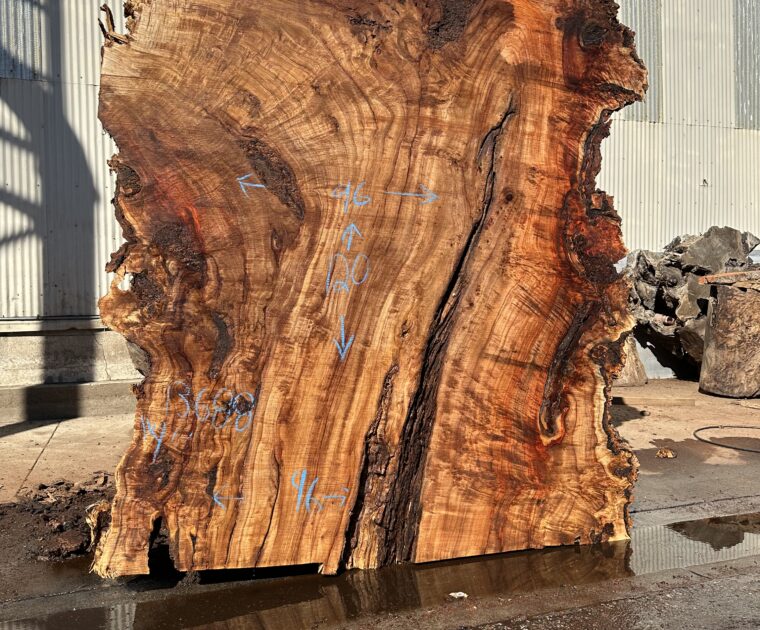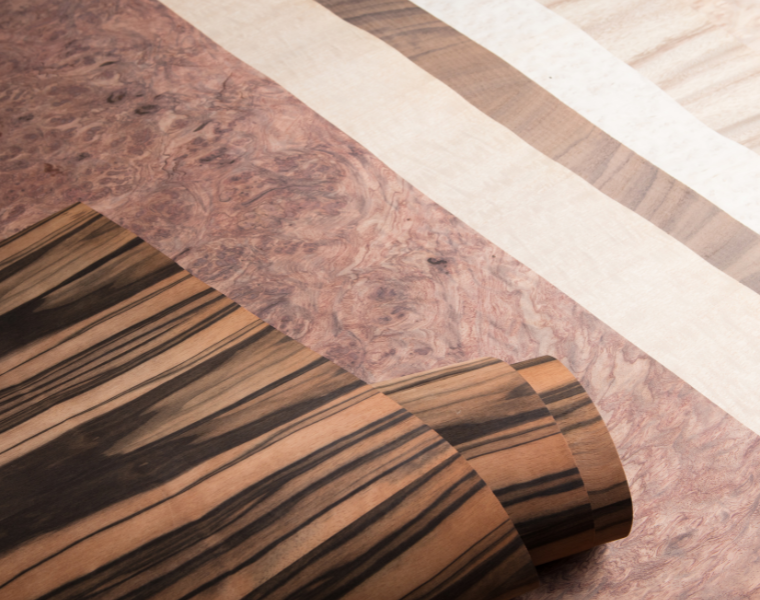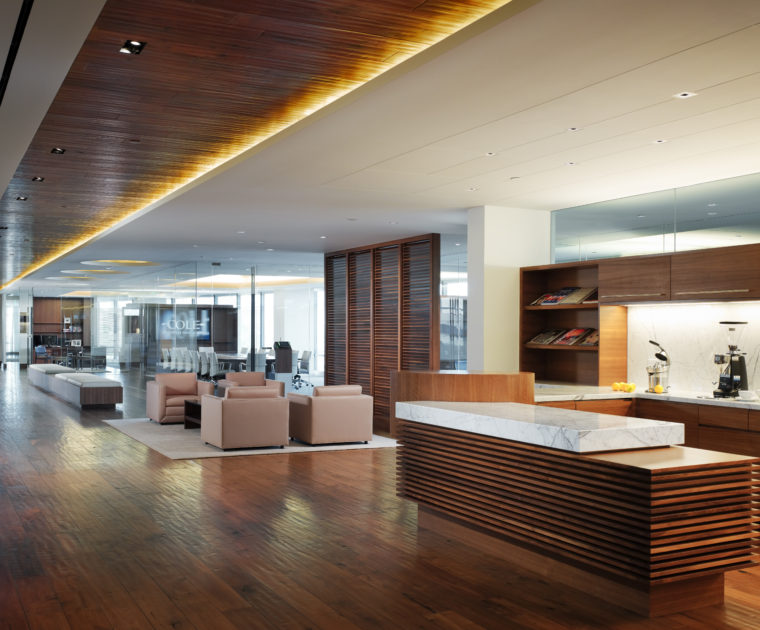Whether complimentary or the focal point of design in a space, live edge furniture will make a lasting impression on guests. Every piece of wood has a unique grain, color, and shape, so there are endless options. This type of furniture preserves a tree’s natural beauty and can bring simplicity and a warm organic feel to your house.
What is a Live Edge?
The wood is not altered and still retains the natural organic movement of the tree’s shape. Usually, there is an obvious color variation between the sapwood (cambium layer) and heartwood (inside layer) of the tree. This raw beauty provides a natural aesthetic to any space. You’ll find that this type of furniture has a magnetism to it where just about every person will need to touch and feel the organic edge.

The History of Live Edge Furniture
While the popularity of live edge furniture has grown substantially in the recent past, the creation and pieces have been present for decades. Wood is one of the oldest-known building materials that we use, dating back 10,000 years ago and still one of the most common materials today, often outweighing other products on the market, especially when looking at environmental impact and performance.
1600’s
The first account of live edge furniture was around the 1600s in America when settlers started building log cabins. These settlers also needed furniture, so the trees were simply sawn into one piece due to precious time and necessity, which yielded unfinished slabs. Albeit these slabs were more for function than design, they provided basic furniture, including tabletops. As the settlement of America progressed, the practice of live edge furniture became less popular.
1946
It wasn’t until 1946 did the term “Live Edge Furniture” begin, and it was George Nakashima who was the founder of this type of design. Even though Live Edge furniture is ubiquitous today, if it weren’t for Nakashima’s avant-garde approach to leaving the wood’s natural edge as part of the finished piece, it would likely not be as popular as it is. Nakashima deliberately chose wood that had “imperfections,” which was something no one had done before. He was famous for celebrating the knots, burrs, and flaws in the wood – He even made butterfly joints famous. His ingenuity in fine furniture and deep passion for the natural beauty of trees continue to inspire artisans still to this day.
“Trees have a yearning to live again, perhaps to provide the beauty, strength, and utility to serve man, even to become an object of great artistic worth.” – George Nakashima
2022
When this article was written, we are currently seeing the highest Google searches for “Live Edge Furniture” ever! The beauty of live edge furniture is that it blends well with any design style and can be showcased in a variety of different mediums. The style isn’t just limited to homes anymore; it can be found in bars, restaurants, offices, and hotels.
The Different Types of Live Edge Furniture
Most of us are familiar with live-edge tables, but this art form extends to so many other pieces of furniture. The beauty of trees is that each one is entirely different from others and will often yield unique shapes and sizes that can be used for other applications beyond just tables. Usually, the slab’s natural shape and individual characteristics will lead you to a specific design and build. Here are a few of the different use that we see people suing live edge slabs:
Live Edge Dining Tables
Arguably the most essential piece of furniture in any home, dining room tables often become heirlooms that families pass down from one generation to the next. Especially when it’s a Live Edge Dining Table. When choosing a live edge wood slab for your dining table, look for the shape that will function most practically in the shape of the room you’ll place it in — generally a Cookie or Round shape for a more square room, and a Slab shape for a longer or more rectangular room.
Either way, try to stick with a more uniform shape with more consistent edges, rather than an extremely organic shape with a lot of “negative” spaces, holes, and irregular edges, which look really cool, but just aren’t that practical as a dining surface.
Also, keep in mind that – for Live Edge Dining Tables – some woodworkers will advise against softwood species because they’re more susceptible to scratching and denting. While they have a “point,” we honestly feel that as long as the table won’t be also used for a writing service – like a conference table or desk – softwoods should be perfectly suitable for your Live Edge Dining Table design.
Some of the more popular species for Live Edge Dining Tables are:

Live Edge Coffee Tables
No matter where you put it, a Live Edge Coffee Table will elevate the aesthetic of any space. And when you go to select the wood slab for your design, you’ll have options to choose from for a coffee table than you do for dining tables. Basically, because coffee tables don’t need to conform to straight, more practical edges as much as dining tables tend to. Coffee tables can also feature exposed holes, knots, and organically curved edges. So you can really leverage the natural shapes of the tree to create a truly unique piece of furniture.
Species often chosen for Live Edge Coffee Tables include:

Epoxy Resin Tables
Live Edge Epoxy Tables introduce a whole new, more modern design approach to Live Edge Slab Furniture designs. They’re made by sawing a wood slab down the middle and inverting the cut wood so that the “clean cut” edges line the outside of the table design and the live edges face one another on the inside of the table. The “negative spaces” created by the facing live edges are then filled with materials like glass or colored resin – the “river” – which creates an intoxicating illusion of movement.
The Live Edge Epoxy Table style really highlights the beauty of an already gorgeous piece of wood. Plus, the near endless color options of the resin give you the flexibility to create a piece that more closely reflects your sense of self expression or the design aesthetic of your home or office.
Species with high-character jagged edges that make great Epoxy Resin Tables include:
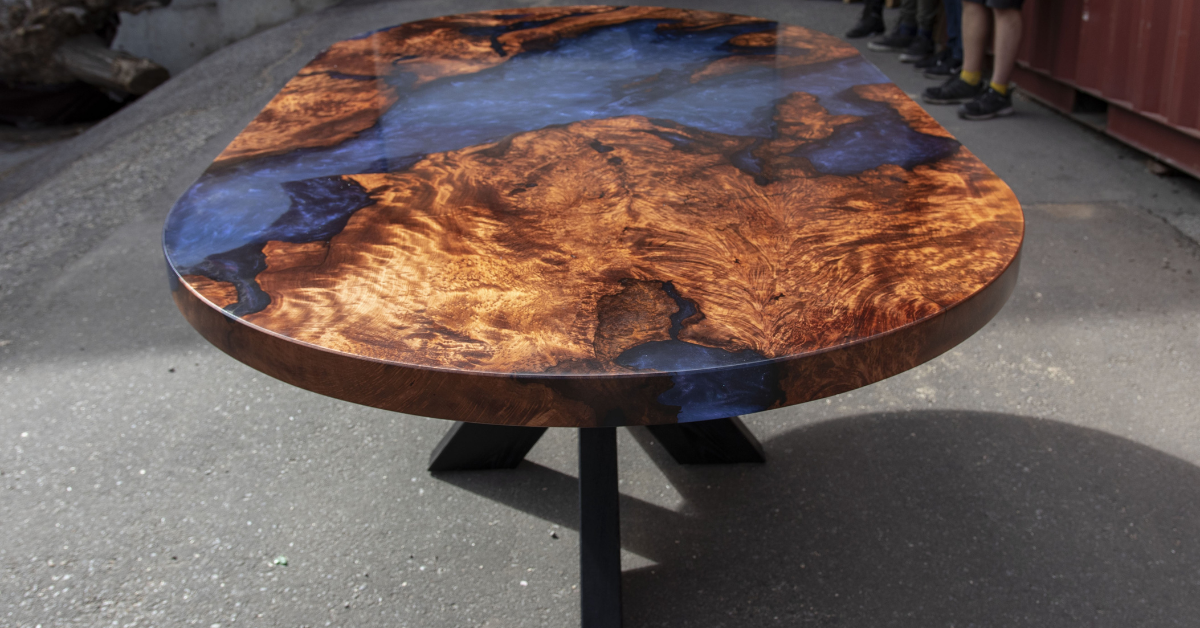
What to Look for in Live Edge Furniture
If you are buying a finished piece, the most important thing is to make sure the slab was dried correctly because if it wasn’t, the table will most likely warp, twist, or crack. For more information on this, visit our article about the 4 Things to Consider When Buying a Live Edge Slab.

Live Edge Furniture FAQs
What does live edge mean on wood?
Live Edge refers to the non manufactured edge of a wood slab. Otherwise known as “live sawn”. This is a particular design of wood furniture where the bark has been removed, so the tree’s outer layer is displayed and still retains the organic shape of the log.
Is live edge furniture a fad?
Live edge furniture has been around since the 1940s, and there is no sign of it slowing up anytime soon. With the hundreds of species to choose from and the infinite amount of shapes and sizes, live edge furniture can blend into any design from contemporary to cabin chic.
Do live-edge tables crack?
A live edge table will crack only if the wood hasn’t been properly dried before being built into a table. However, wood will also expand and contrast based on extreme heat and humidity, so the environment the furniture is in will have an impact on it’s stability. We always recommend a temperature controlled environment to preserve the life of of a piece.
Is real wood furniture worth the extra cost?
Yes. Live edge and slab furniture become family heirlooms that can be appreciated for generations. As with anything, you get what you pay for, so make sure you are sourcing your slabs from a reputable supplier, and the woodworker knows the nuances of working with this type of material.
What’s the best place to get real solid-wood furniture?
The best place to buy quality solid-wood furniture is through a reputable woodworker. These craftsmen are likely sourcing their slabs from sustainably harvested timber. Each piece is handcrafted to last for decades. Be cautious of buying live edge furniture from larger retailers; While they may have more affordable prices, they are likely built using inferior materials and won’t have the selection of species that these smaller companies/artisans can offer.
Is live edge furniture better for the environment?
Yes, wood is one of the few TRULY renewable resources on our planet. Generally the grade of a “slab log” is one that gets thrown in the wood chipper. This is where we come in and repurpose the material and see that it’s used for a higher purpose. After a tree has died, fallen, or been professionally removed, its journey is far from over. Live edge furniture gives these fallen giants a second life by reclaimed furniture.
How much does a live edge table cost?
Slabs have a wide range of costs which really depend on the species and size. There is a lot of time and care that goes into getting this material to a saleable state. Slabs cure for an average of 3 years before they are put in the kiln to dry. It’s not unlike a fine wine or whiskey, but good things are worth waiting for! This is all to say, that while slabs may be on the costly side, the impact and statement that they make is undeniable.


